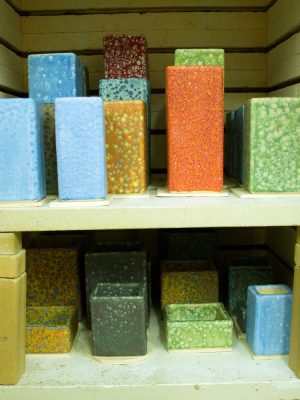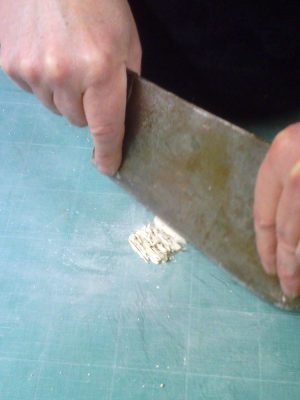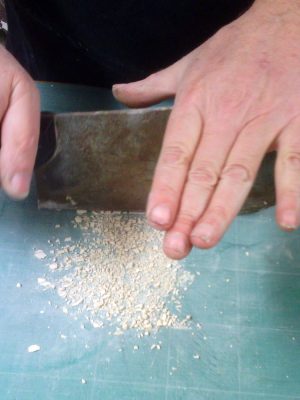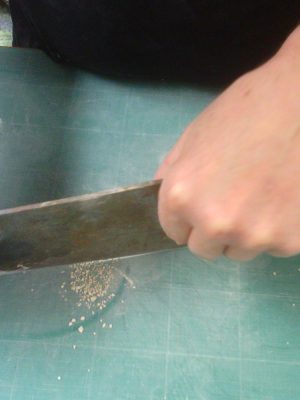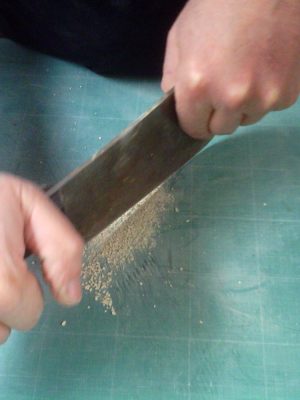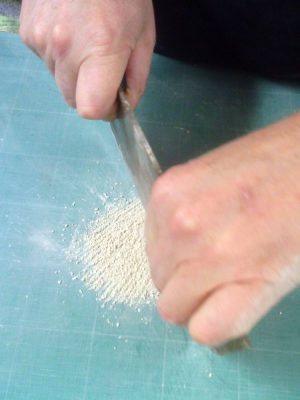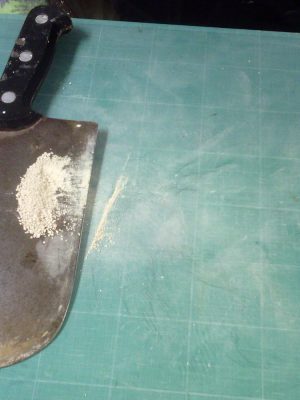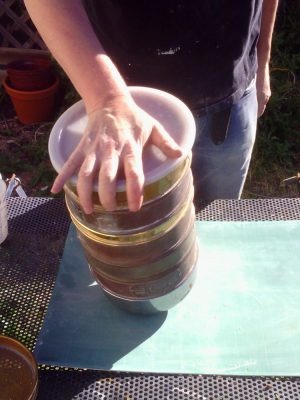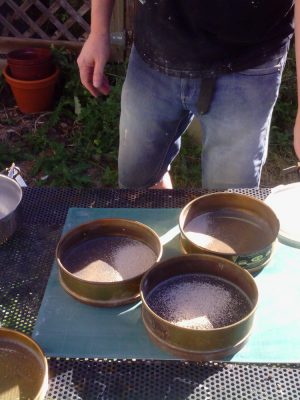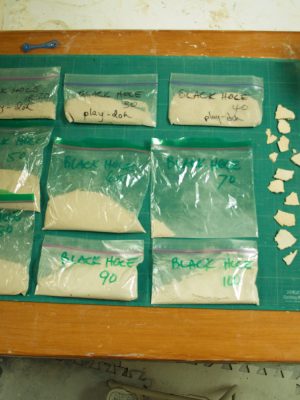I ended the week with a firing. It’s still a little warm to unload but here’s a glimpse. Will look at the results more closely next week. In the mean time, here’s some of the process that got me there.
More of the special polymer additive had to be made before I could get back to glazing. Two of the required four mesh sizes were used up on the sixty six tests.
After preparing the mix, the polymerized glaze was spread into a thin a sheet to dry. With the cooperation of the sun and a steady breeze, it took two days.
The last batch was ground in the blender. That’s the fast way. Problem is it makes for an uneven distribution of mesh sizes. 18 and 20 mesh combined to less than half as much in terms of volume as the others in the target group. Blender = supply imbalance.
Hand chopping allows for a more even distribution of mesh sizes. A lot slower but well worth the effort. If I positioned my left palm at just the right spot on the top edge of the blade, it became almost effortless to rock the handle up and down with the right. As the cutting edge rocked back and forth, it left a trail of finely chopped material in its wake. Every few passes, this material would be swept up and passed through the sieves.
Anything that can’t pass through a 16 mesh sieve is too big. This glaze family uses 18, 20, 30 and 40 mesh grains.18’s are the ones that make it all the way to the surface — the white spots. 20’s make it to the bottom layer of glaze. 30’s and 40’s cover the distance between the first and third layer of glaze.
The range from 50 to 100 mesh is still largely unexplored territory. The one test of each done so far suggests they give a progressively finer grain and texture to the top layer of glaze.
Hand chopped or mechanically ground, 70 mesh seems to be an anomaly. Next to none either way.

